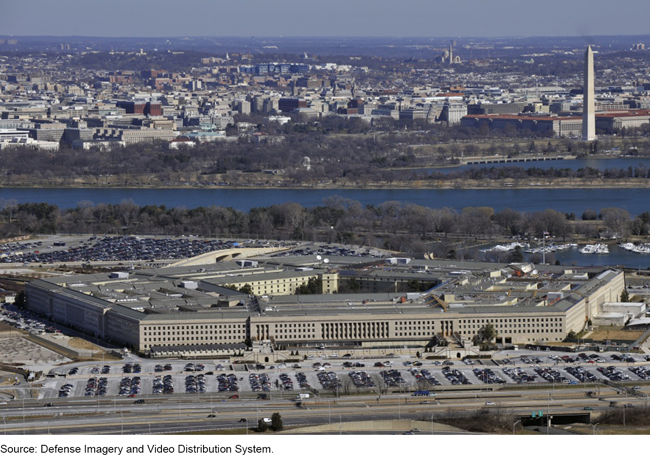Defense Management: Opportunities Exist to Improve DOD's Reform Efforts
Fast Facts
The Department of Defense's business operations are important functions that keep the department running, such as human resources and contracting. DOD's approach to transforming these business operations has been on our High Risk List since 2005.
Inconsistent performance data, cost baselines, and inadequate documentation have made it hard to determine whether reform efforts are working. Over the years, DOD has taken steps to improve the data, but it needs to do more. DOD needs to clarify who does what, and give those offices the authority and resources they need to do the job.
This testimony discusses reports on this topic from 2017-2020.

Highlights
What GAO Found
The Department of Defense (DOD) has long sought to reform its enterprise business operations—such as its processes to manage contracts, finances, and supply chain— but faces challenges in improving department-wide management. DOD has taken some actions to improve its business operations data, but remains limited by the lack of reliable cost data, affecting its ability to monitor and inform its reform efforts. Having reliable data to identify baseline costs of the department's business and management functions and to measure progress has been a key challenge facing DOD, but one the department is trying to address. As GAO reported in November 2020, DOD has made progress in setting baseline costs of certain activities, such as logistics and real estate management. Further, DOD has ongoing efforts to develop baselines for all of the department's enterprise business operations that should enable it to better monitor reform progress. However, DOD needs better data about how it performs its business functions. For example, in September 2018, GAO reported that DOD's efforts to reduce inefficiencies in human resources services were hampered by inconsistent performance data across the six organizations that provide these services. DOD has ongoing efforts to address GAO's recommendations.
DOD still needs clear roles, responsibilities, authorities and dedicated resources to support reform. GAO has found that demonstrating sustained leadership commitment—including through ensuring that those responsible for leading change have clearly defined and documented roles, responsibilities, and authorities—is imperative for successful business transformation. GAO has assessed many of DOD's organizational structures over the decades, including the recently eliminated Chief Management Officer (CMO) position. GAO found that, while Congress had given the CMO both significant responsibilities and authorities, DOD had not resolved unanswered questions about how those authorities would be carried out, nor communicated the CMO's roles and responsibilities department-wide. GAO also identified instances where CMO reforms were hampered by a lack of resources. As DOD moves to an organization without the CMO position, which was eliminated in 2021, clarifying the roles and responsibilities of those tasked with managing business reform remains important.
DOD could also improve its efforts to reliably demonstrate progress toward meaningful reform. DOD has reported achievements from some of its department-wide efforts, such as its reported $37 billion in savings from fiscal years 2017 to 2021. However, GAO reported in November 2020 that while DOD's reported savings were largely reflected in its budget materials, the underlying analyses were not always well documented and the savings were not always consistent with the department's definitions of reform. For example, one reform initiative was based on delaying military construction projects that, according to DOD officials, allowed DOD to fund higher priorities. If a delayed project is still planned, however, the costs will likely be realized in a future year and are not a reflection of business process reform. DOD concurred with GAO's recommendations to establish a process to standardize development and documentation of such cost savings, and ensure that reported savings are consistent with the department's definitions of reform.
Why GAO Did This Study
DOD spends billions of dollars each year to maintain key business operations and defense-wide agencies and programs intended to support the warfighter, including systems and processes related to the management of contracts, finances, the supply chain, support infrastructure, and weapon systems acquisition. The department's approach to transforming these business operations is linked to its ability to perform its overall mission, directly affecting the readiness and capabilities of U.S. military forces.
This testimony summarizes GAO's past work related to DOD's efforts to improve the management of its business operations. Specifically, this testimony discusses DOD's efforts to (1) improve data and baselines to monitor and inform reform efforts; (2) establish clear roles, responsibilities, and authorities for leading reform efforts, and dedicate resources to these efforts; and (3) reliably demonstrate progress in its reform efforts. This statement is based on GAO's body of work issued from 2017 through 2020 on DOD management and business reform issues.
Recommendations
In prior work on which this testimony is based, GAO recommended that DOD improve its performance measures related to various reform efforts, and standardize cost-savings documentation to ensure that reported savings are consistent with DOD's definitions of reform, among other things. DOD concurred with the recommendations.
